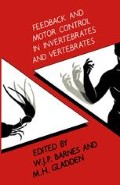Abstract
The stretch reflex in which the stretched muscle pulls back so as to resist a disturbing force is such a widespread response in the animal kingdom that it might be thought to be worked out as an object for study. The neural circuitry responsible for such an apparently simple example of negative feedback might well have been expected to have achieved an optimum configuration early in evolution and remained relatively constant thereafter. At least in higher mammals it might be expected to be invariant. Indeed it is still sometimes taught that this is so, and that all there is to the reflex is excitation of the group Ia afferents from the primary ending of the muscle spindle leading to monosynaptic activation of the motor neurones of the stretched muscle and its close synergists. Unfortunately, things have proved to be a great deal more complex, and this circuit is now widely recognized as providing only a part of the mechanism of the stretch reflex. Debate continues, with no obvious end in sight, as to how much additional neural circuitry is involved and what functional advantages accrue to the body by its introduction (cf. Houk & Rymer, 1981).
Access this chapter
Tax calculation will be finalised at checkout
Purchases are for personal use only
Preview
Unable to display preview. Download preview PDF.
References
Cheney, P.D. & Fetz, E.B. (1964). Corticomotoneuronal cells contribute to long. latency stretch reflexes in the rhesus monkey. J. Physiol., 349, 249–272.
Cody, F.W.J., MacDermott, N., Matthews, P.B.C. & Richardson, H.C. (1984). Electromyographic responses of Parkinsonian patients to wrist extension and to flexor tendon vibration. J. Physiol., 351, 19P.
Eklund, G., Hagbarth, K.E., Hagglund, J.V. & Wallin, E.U. (1982). The ‘late’ reflex responses to muscle stretch: the ‘resonance hypothesis’ versus the ‘long. loop hypothesis’. J. Physiol., 526, 79–90.
Evarts, E.V. (1981). Role of motor cortex in voluntary movements in primates. In Handbook of Physiology, Section 1, The Nervous System, Vol. 2, Motor Control. Ed. Brooks, V.B. American Physiological Society, New York, pp. 1085–1119.
Hammond, P.H. (1960). An experimental study of servo action in human muscular control. In Proc. III International Conference in Medical Electronics. Butterworths, London, pp 190–199.
Houk, J.C. & Rymer, W.Z. (1981). Neural control of muscle length and tension. In Handbook of Physiology, Section 1, The Nervous System, Vol. 2, Motor Control. Ed. Brooks, V.B. American Physiological Society, New York, pp. 257–323.
Lee, R.G. & Tatton, W.G. (1978). Long loop reflexes in man: clinical applications. In Cerebral Motor Control in Man: Long Loop Mechanisms. Ed. Desmedt, J.E. Karger, Basel, pp. 167–177.
Lee, R.G. & Tatton, W.G. (1982). Long latency reflexes to imposed displacements of the human wrist: dependence on duration of movement. Expl. Brain Res., 45, 207–216.
Lenz, F.A., Tatton, W.G. & Tasker, R.R. (1983). The effect of cortical lesions on the electromyographic response to joint displacement in the squirrel monkey forelimb. J. Neurosci., 3, 795–805.
Marsden, C.D., Merton, P.A. & Morton, H.B. (1976). Servo action in the human thumb. J. Physiol., 257, 1–44.
Marsden, C.D., Rothwell, J.C. & Day, B.L. (1983). Long latency automatic responses to muscle stretch in man: their origins and their function. In Motor Control Mechanisms in Man: Electrophysiological Methods and Clinical Applications. Ed. Desmedt, J.E. Raven, New York, pp. 509–539.
Matthews, P.B.C. (1969). Evidence that the secondary as well as the primary endings of the muscle spindles may be responsible for the tonic stretch reflex of the decerebrate cat. J. Physiol., 204, 365–393.
Matthews, P.B.C. (1984a). Evidence from the use of vibration that the human long-latency stretch reflex depends upon spindle secondary afferents. J. Physiol., 348, 383–415.
Matthews, P.B.C. (1964b). The contrasting stretch reflex responses of the long and short flexor muscles of the human thumb. J. Physiol., 348, 545–558.
Matthews, P.B.C. (1984c). Observations on the time course of the electromyographic response reflexly elicited by muscle vibration in man. J. Physiol., 353, 447–461.
Matthews, P.B.C, Bawa, P. & Matthews, H.R. (1962). Synchronisation of motor firing by vibration during stretch evoked responses of human wrist flexors. Expl. Brain Res., 45, 313–316.
Phillips, C.G. (1969). Motor apparatus of the baboon’s hand. Proc R Soc B, 173, 141–174.
Phillips, C.G., Powell, T.P.S. & Wiesendanger, M. (1971). Projection from low-threshold muscle afferents of hand and forearm to area 3a of baboon’s cortex. J. Physiol., 217, 419–446.
Tatton, W.G., North, A.G.E., Bruce, I.C. & Bedingham, W. (1983). Electromyographic and motor cortical responses to imposed displacements of the cat elbow: disparities and homologies with those of the primate wrist. J. Neurosci., 3. 1807–1817.
Editor information
Editors and Affiliations
Rights and permissions
Copyright information
© 1985 W.J.P. Barnes and M.H. Gladden
About this chapter
Cite this chapter
Matthews, P.B.C. (1985). Human Long-Latency Stretch Reflexes-A New Role for the Secondary Ending of The Muscle Spindle?. In: Barnes, W.J.P., Gladden, M.H. (eds) Feedback and Motor Control in Invertebrates and Vertebrates. Springer, Dordrecht. https://doi.org/10.1007/978-94-011-7084-0_27
Download citation
DOI: https://doi.org/10.1007/978-94-011-7084-0_27
Publisher Name: Springer, Dordrecht
Print ISBN: 978-94-011-7086-4
Online ISBN: 978-94-011-7084-0
eBook Packages: Springer Book Archive

